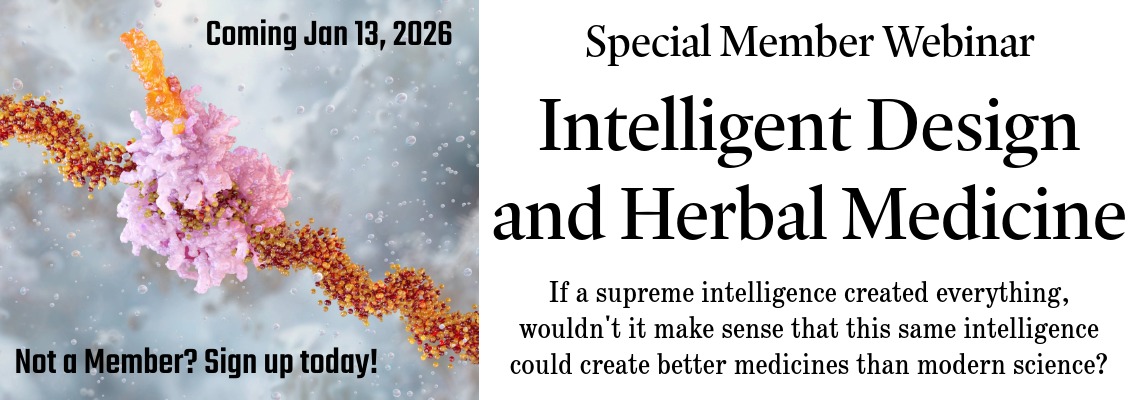
As spring rolls around, many small plants appear, mostly considered weeds. These plants are often overlooked because they have small, rather than showy, flowers and a weedy appearance. But over the years I've trained myself to see and appreciate plants with tiny flowers, and so every spring I’m greeted by these numerous small friends.
One of these is storksbill, a member of the geranium family, also known as heron’s bill or filaree. The species of storksbill I’m familiar with is redstem filaree, Erodium cicutarium. You won't find storksbill for sale in the commercial herb market, but it is edible and medicinal, and is also used as a flower essence. The Chinese use Erodium stephanianum as medicine, so there are some Chinese indications for the storksbill genus.
Identifying Storksbill
 Storksbill has a wide range in America, so you’ll probably find it growing in your area if you look for it. Storksbill grows fairly low to the ground in a basal rosette (all the leaves coming out of a single taproot like a dandelion) with fernlike leaves. If there is sufficient moisture, the plant spreads out in a weedy fashion.
Storksbill has a wide range in America, so you’ll probably find it growing in your area if you look for it. Storksbill grows fairly low to the ground in a basal rosette (all the leaves coming out of a single taproot like a dandelion) with fernlike leaves. If there is sufficient moisture, the plant spreads out in a weedy fashion.
It has very small pink to reddish-colored flowers that look like wild geraniums or cranesbills, which are found in the genus Geranium. These are different than the geraniums most people grow, which are from the genus Pelargonium.
However, the flowers aren't the most eye-catching part of the plant; it’s the fruits or seed pods for which the plant is named. They are long and pointy like the bill of a stork or heron, hence the common name. They have a long, needle-like appearance. Once you spot the plant's leaves and fruits, you’ll readily recognize it every time you see it.
Medicinal Properties of Storksbill
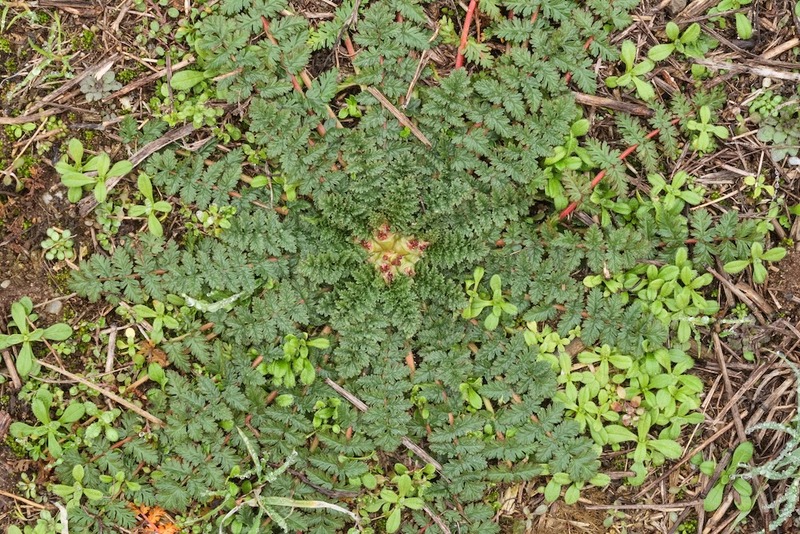 Storksbill is primarily used as an astringent. It’s a much weaker one, but still valuable for arresting excessive discharge, such as heavy menstrual bleeding. It’s also a cooling diuretic that can be used to reduce swelling and edema and soothe red, irritated tissues.
Storksbill is primarily used as an astringent. It’s a much weaker one, but still valuable for arresting excessive discharge, such as heavy menstrual bleeding. It’s also a cooling diuretic that can be used to reduce swelling and edema and soothe red, irritated tissues.
The Navaho used it to treat animal bites, and I’m assuming it would also help with insect bites. Southwestern Native Americans also used it to treat infections, and Michael Moore, who discusses the plant in Medicinal Herbs of the Mountain West, says the plant has some antiviral activity. It has also been used for gout and joint pain. You can harvest the whole plant for these purposes, but the root will have the strongest astringent action.
The Chinese Medicine Lao Guan Lao
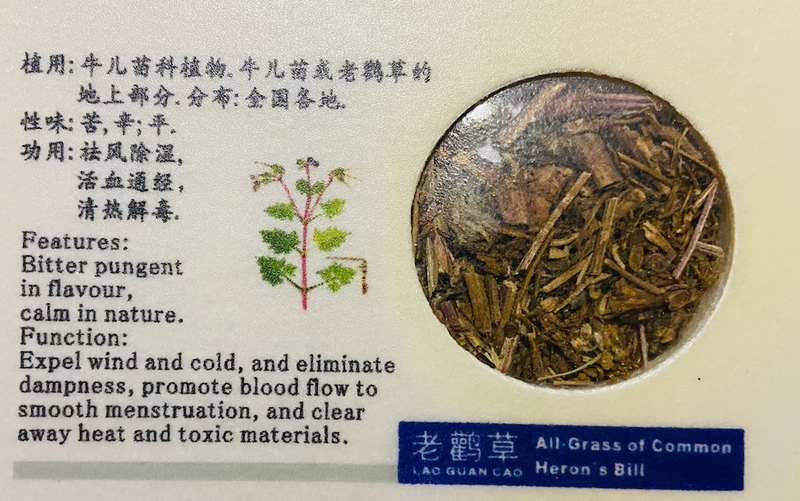 A Chinese species of storksbill, Erodium stephanianum, and two wild geraniums, Geranium carolinianum and C. wilfordii, are used as the traditional Chinese medicine, Lao Guan Lao. These herbs are used to expel wind and dampness. The taste is considered acrid and bitter, but the energy is neutral, which means it can expel cold but also clear heat. This is similar to the cooling, drying, and toning qualities of storksbill. Lao Guan Loa is also believed to activate meridians, specifically the kidney, liver, and spleen meridians.
A Chinese species of storksbill, Erodium stephanianum, and two wild geraniums, Geranium carolinianum and C. wilfordii, are used as the traditional Chinese medicine, Lao Guan Lao. These herbs are used to expel wind and dampness. The taste is considered acrid and bitter, but the energy is neutral, which means it can expel cold but also clear heat. This is similar to the cooling, drying, and toning qualities of storksbill. Lao Guan Loa is also believed to activate meridians, specifically the kidney, liver, and spleen meridians.
In China, the above-ground parts of these plants are gathered, cut, and dried. They are used in decoctions, ointments, or applied as poultices. The herb is then used for diarrhea, gout, joint and muscle pain, injuries, urinary tract infections, eczema, and leukorrhea.
Filaree Flower Essence
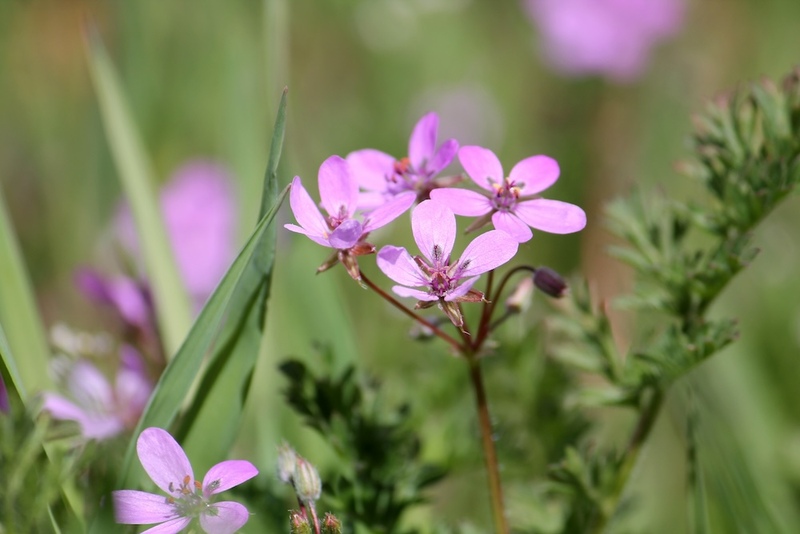 Erodium cicutarium is also used as a flower essence sold under another name for the plant, filaree. It’s a remedy for nitpickers, people who are overly obsessed with small details and minor concerns. They worry too much about mundane affairs and spend too much time and energy on relatively unimportant things.
Erodium cicutarium is also used as a flower essence sold under another name for the plant, filaree. It’s a remedy for nitpickers, people who are overly obsessed with small details and minor concerns. They worry too much about mundane affairs and spend too much time and energy on relatively unimportant things.
Filaree flower essence helps these people gain a higher perspective on life so they can see the bigger picture and create better priorities in their lives. You might say that filaree helps people to “not sweat the small stuff.” When you have a higher perspective, you can more properly judge the relative importance of each detail.
When I first learned about filaree as a flower essence, I connected the nit-picky nature associated with the plant with the long, pointy fruits from which the plant gets its common names, storksbill and heron’s bill. These long, pointy fruits look like pins or needles that can poke at small things.
 But the fruits and seeds have some other interesting signatures that relate to the plant's use in mental and emotional healing. The pointy seed pod bursts open when ripe, and the seeds, which have long tails attached to them, spring out and fly through the air so they can disperse at a greater distance from the original plant. The seed tails curl up when dry (like tiny springs), and when wet, they straighten out, which allows them to bore into the ground when moisture is present. This leads me to believe that the flower essence is not just for people who obsess with details; they might also get wound up, explode, and burrow into in small, often insignificant details.
But the fruits and seeds have some other interesting signatures that relate to the plant's use in mental and emotional healing. The pointy seed pod bursts open when ripe, and the seeds, which have long tails attached to them, spring out and fly through the air so they can disperse at a greater distance from the original plant. The seed tails curl up when dry (like tiny springs), and when wet, they straighten out, which allows them to bore into the ground when moisture is present. This leads me to believe that the flower essence is not just for people who obsess with details; they might also get wound up, explode, and burrow into in small, often insignificant details.
Using Storksbill for Food and Medicine
 Storksbill is edible when it is young. So, if you spot it early in the spring, you can pick some of the leaves and eat them as part of a salad. I typically nibble on a few leaves every spring. They have a parsley-like flavor, but are stronger-tasting than parsley. They are edible, but not tasty enough to make me want to eat a lot of them.
Storksbill is edible when it is young. So, if you spot it early in the spring, you can pick some of the leaves and eat them as part of a salad. I typically nibble on a few leaves every spring. They have a parsley-like flavor, but are stronger-tasting than parsley. They are edible, but not tasty enough to make me want to eat a lot of them.
To use storksbill as a medicine, you gather the whole plant, wash it off, chop it up, and allow it to dry. The standard way to use it is as an infusion or tea. Drink the tea to relieve water retention, relieve gout, joint and muscle pain, or for heavy menstruation.
You could also crush the fresh leaves and use them as a poultice for insect bites or minor injuries where there is swelling and redness. Since the Chinese species is used in topical preparations, you could also try making a salve or lotion from the plant. I haven't tried it, but I think it would be an interesting experiment.
One shortcoming of commercial herbalism is its tendency to focus on certain popular plants, which often leads to them being over-harvested and driven to near extinction. This is unfortunate because there are numerous, abundant, weedy plants growing everywhere that we could be using instead. Storksbill is one of them, so if you spot some growing near you this spring, take a moment to appreciate its tiny flowers and consider tasting the leaves, or even gathering the whole plant and try using it as medicine.
Steven's Articles
-

-
The Evidence for Berberine
A yellow alkaloid found in traditional infection-fighting…
-

-
The Sensible Use of Caffeinated Herbs
Kola nuts, guarana, and yerba mate and other herbs…
-

-
The Health Benefits and Problems with Coffee
This popular caffeinated beverage can be beneficial…
October
-

-
Understanding Caffeine & Cellular Adaptation
Preserving the power of caffeine's buzz and the…
September
-

-
Horseradish
A pungent spice for aiding protein metabolism…
-

-
Banaba or Crepe Myrtle
A beautiful tree from Southeast Asia whose leaves…
August
-

-
Monkeyflowers
Flower essences to help see ourselves more clearly…
-

-
Mariposa Lilies
Strengthening the bond between mother and child…
-

-
The Noble Bay Leaf
A common kitchen herb for aiding digestion and…
-

-
Epimedium: Horny Goat Weed
A circulatory stimulant and kidney yang tonic…
July
-

-
The Medicinal and Nutritional Benefits of Apricots
A nutritious fruit and valuable medicinal seed for coughs
-

-
Dogwoods
Asian dogwood is used to stop excessive discharge,…
June
-

-
Neem: The Village Pharmacy
A popular Ayurvedic remedy for dental and immune…
-

-
Spilanthes: The Toothache Plant
A traditional remedy for teeth and gums, as well…
-

-
Forsythia
An anti-inflammatory, fever-reducing, and infection fighting herb

